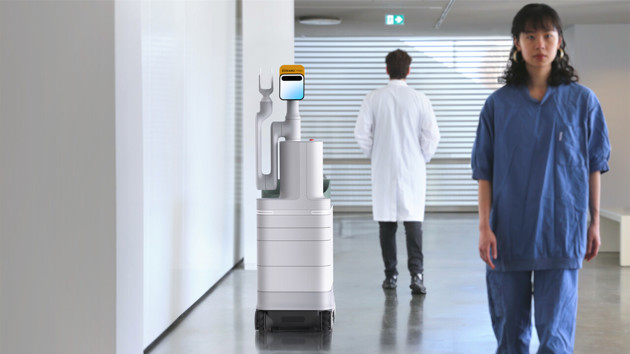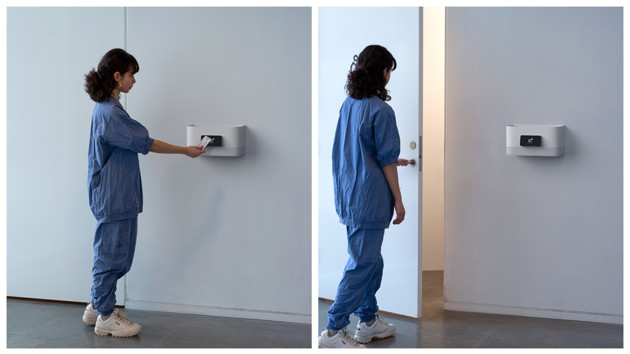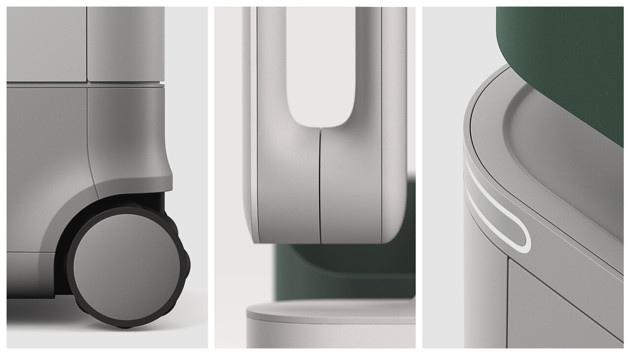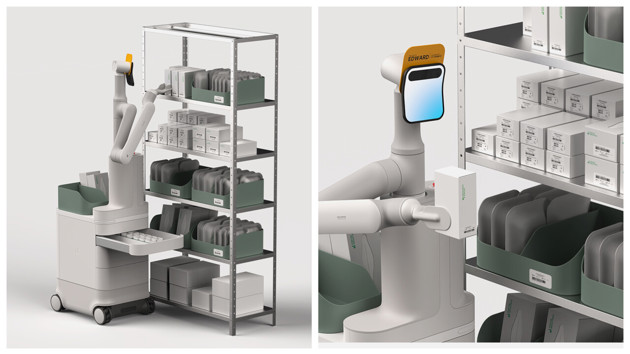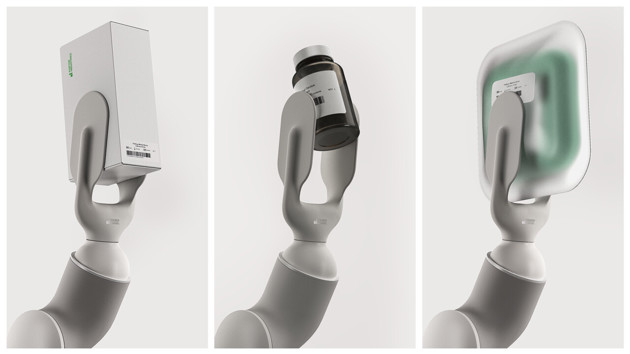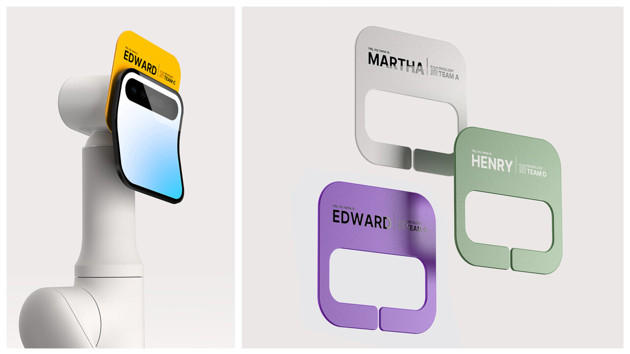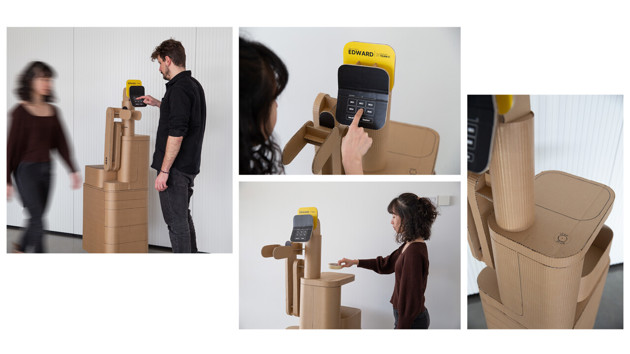UID23 | Laurenz Simonis – Grad Project Presentation
Collaborative care
This project investigates the challenges faced by the healthcare sector due to demographic changes and explores the potential of collaborative robots in relieving the health care staff. By applying user-centered research methods, including interviews and shadowing exercises, several pain-points in the logistics, preparation, and administration of medicine around a ward have been identified. As a result, a solution that involves an autonomous, integrated mobile unit and distributed access points has been proposed, taking over a majority of tasks in the re-supply and delivery of drugs on a ward. The system aims to reduce nurses' time spent on time-intensive tasks, allowing them to prioritize patient care activities and enhance overall quality of care.
Project information
Demographic changes are putting the healthcare sector globally under pressure. Aging populations and a rise in chronic diseases have seen a need for more hospital care, which could not be met in nursing capacity. The resulting higher demands to the existing workforce have resulted in a rise of burnout and a low retention rate in the industry. Meanwhile, advancements in robotics have allowed for collaborative robots to work closely with humans, automating repetitive tasks in many industries. However, the healthcare sector is still reluctant to change and is not yet seeing larger-scale implementations of automated processes. This project investigates the problems with the design of medical collaborative robots today, while identifying repetitive and tedious tasks with potential for automation by applying user-centered research methods and proposes actionable design principles for a successful implementation of robotics in hospitals.
Method
In order to get a good understanding of the everyday challenges nurses face, it was critical to get in touch with users early on. During the research phase of this project, multiple interviews have been conducted. Furthermore, about 15 hours have been spent shadowing nurses at Umea University Hospital. This saw a lot of pain-points in the the medication preparation and administration. From the delivery through the pharmaceutical supplier, to the administration to the patient, a lot of logistical steps involve intervention by the nurses. Any human error along the logistical journey would cause for significant problems down the line, for example when a drug is urgently needed but has not been refilled as planned. These errors will often be caused by high stress levels during shifts. The logistical interventions add no direct value to patient care and is perceived as a burden by many nurses.
These insights have directed the project focus towards logistical solutions in the transportation, storage, and re-supply of drugs in wards. Due to the scale of the proposed solution, working in full scale has been an essential part to the product development during this project. Early on, tapedrawings have been used to test and validate solutions regarding ergonomics and perception, in the design of a mobile, collaborative robot. Later in the process, quick sketch-models and higher-fidelity cardboard models have been used to simulate solutions in volume, which proved critical to design for an approachable solution.
Result
The result is a logistical system consisting of a fully autonomous, integrated mobile unit and distributed access points. The latter allows for an asynchronous interaction between the mobile unit and nurses, ensuring independence in completion of each stakeholder’s respective tasks. The system is designed to retain and empower nurses’ contact with their patients, by taking timeintensive tasks in medical logistics out of their hand. This saved time, in turn, can be translated to more time spent on care-related activities, improving patient’s outcome and overall quality of care. Furthermore, the physical demands connected to logistical tasks in nursing will be significantly reduced, by avoiding distances covered walking fetching items from around the ward.
The hospital environment demands easy cleanability, to avoid crosscontamination induced by the robot. Thus, the design-language has mainly been driven by designing for smooth and integrated shapes. This especially applies for the manipulator-arm. Here, avoiding injuries through pinching movements in the arm was important and has resulted in the blended shapes that can be found throughout its body.
Besides that, designing for an approachable character was important. As the mobile unit will use the public hallways of a hospital, it will be exposed to users that might be unfamiliar with autonomous, mobile entities, such as patients or patients families. Through subtle, playful elements, such as the name-tag found behind the display on the “head” of the mobile unit aims, Porter aims to be an unobtrusive participant in the hospital landscape.
Laurenz Simonis

In collaboration with:

UID23 | Laurenz Simonis – Grad Project Presentation
